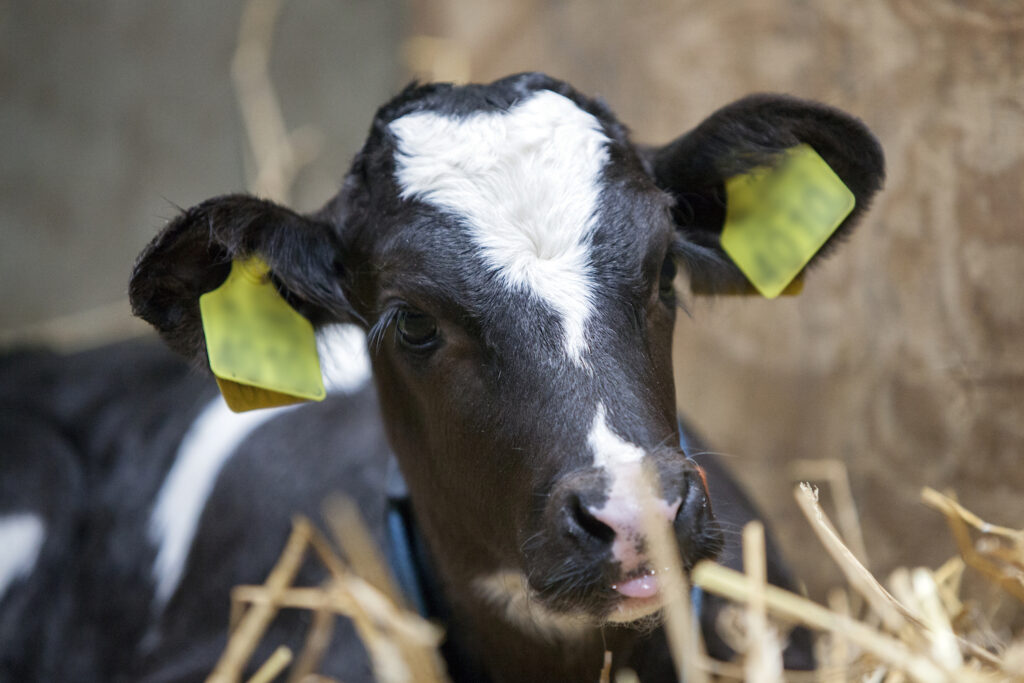Calf sheds: What can we learn from the poultry sector?
10th March 2021
In the past few decades, the poultry sector has made significant strides in purpose-built housing and technology to monitor environmental conditions. Boehringer Ingelheim Animal Health has been working with PrognostiX to find out how the dairy sector could learn from this to reduce calf mortality. Sarah Kidby reports.

Speaking at this year’s Dairy Tech Online, poultry vet Dr Barry Thorp, a consultant for PrognostiX, described the high level of uniformity achieved on some poultry farms – it starts with the hatchery producing uniform chicks from single or similar sources.
Typically, from a 40-week-old source flock, day-old chicks will weigh about 43g. The broiler farm aims for regular and similar weight gain in all the chicks in a shed up to killing, usually at about 34 days with a weight of 2.2kg. For those farms, which may have up to 50,000 birds, farmers will lose money if weights are not uniform.
In order to achieve this, the chicks must all eat and drink the same amount each day and grow at exactly the same rate; therefore, conditions must be consistent throughout the entire shed, including temperature, ventilation and food and water supply, and disease risk must be controlled. Without that, uniformity will be lost, production will be impacted and mortality invariably rises, Dr Thorp said.
Utilising technology
Traditionally, poultry houses would have had around two environmental sensors, but as the cost has come down, multiple sensors are now used to demonstrate a pattern throughout the entire shed. For the past four years, PrognostiX has been developing a more robust way to gather information on the poultry environment, including sensors for temperature, humidity, light, CO2 and air pressure – which can then be tied in with performance and health data.
The company also looks at slaughterhouse data – if there is an increase in condemnations, this can be looked at in conjunction with other data. On one farm, mapping revealed cold spots in part of the shed, coupled with a rise in condemnations, which was later found to be due to a leaking inlet vent. In this instance, despite inspecting the sheds 2–4 times a day, the farmer was not able to detect the temperature differences. A 24-hour climate map demonstrates whether cold spots exist 24/7 or merely at night, giving farmers access to additional data.
The poultry sector benefits from a very quick feedback loop, meaning any problems detected can be quickly corrected prior to the next flock– something that is not the case for dairy, Dr Thorp noted.
Calf mortality
Dr Ailsa Milnes, veterinary advisor at Boehringer, said past research has shown 14.5 per cent of live born heifers fail to reach their first lactation (Bricknell et al, 2009), and this figure is not thought to have changed significantly over the years.
Key causes of mortality in neonatal calves are cryptosporidiosis, joint ill, colisepticemia, and lack of colostrum (Animal and Plant Health Agency), while for those aged 1–6 months, it is pneumonia.
Taking into consideration that the average cost of heifer rearing is £1,800, this can mean substantial losses for farmers. In addition, it is estimated that it costs £2.87 per day for each day that age at first calving is delayed. Lifetime milk yields will also be impacted if nutrition, disease and respiratory issues are not correctly managed.
Data matters
In order to improve health, Dr Thorp said producers must enhance their data gathering on environmental management and then modify those conditions where problems are highlighted.
Dr Milnes advised a holistic approach to push the immunity in favour of the calf – covering the calf’s environment (hygiene, nutrition and buildings) and immunity (colostrum and vaccination). When it comes to the environment, five factors are key: hygiene, ventilation (fresh air), air speed (drafts), moisture and temperature.
Whilst there is often reliance on natural ventilation via the stack effect – air is drawn in through the sides of the building and hot air from the animal rises – calves are not ruminating and therefore do not produce enough heat to achieve this. Mechanical ventilation using air tubes should be considered, Dr Milnes said.
Calf housing trials
Whilst the Covid-19 pandemic has slowed things down, Boehringer and PrognostiX have been working together to install sensors in calf housing to learn about the level of variation within buildings. Placing 4–5 sensors in a shed for a week revealed diurnal variations, with temperatures dropping to 2ºC at night (well below the Lower Critical Temperature of 10–15ºC for neonatal calves) and rising to a maximum of 12ºC.
Research shows there is an association between low temperature and increased mortality, Dr Milnes commented. The LCT is also impacted by the flooring – for example, dry concrete increases the LCT to 17ºC whereas dry straw lowers it to 8ºC.
Data shows that if farmers could replicate optimum temperatures all year round, they could significantly reduce deaths, with huge financial savings, not to mention welfare improvements.
“Our take-home message is that respiratory disease has a huge impact on calf health, growth rates and farm productivity and sustainability,” Dr Milnes said. “Therefore, understanding your own system so you can identify your own pinch points is really important and there are lessons in all that from the pig and poultry industry that we can use in the cattle industry.”
She added: “If you’ve got disease issues, you’re not going to get those right until all your ducks are in a row. And to do that you need to understand your system, use the data that is appropriate for you and record that data. Benchmark against yourself and make the changes you need to make. Then repeat on a continual improvement basis.
“Communication is extremely important, whether it’s with the people on your farm and also with your vet so you can use the vet for prevention rather than a reactive approach. Keep monitoring to show the improvements, so you can support the changes you’ve made.”
